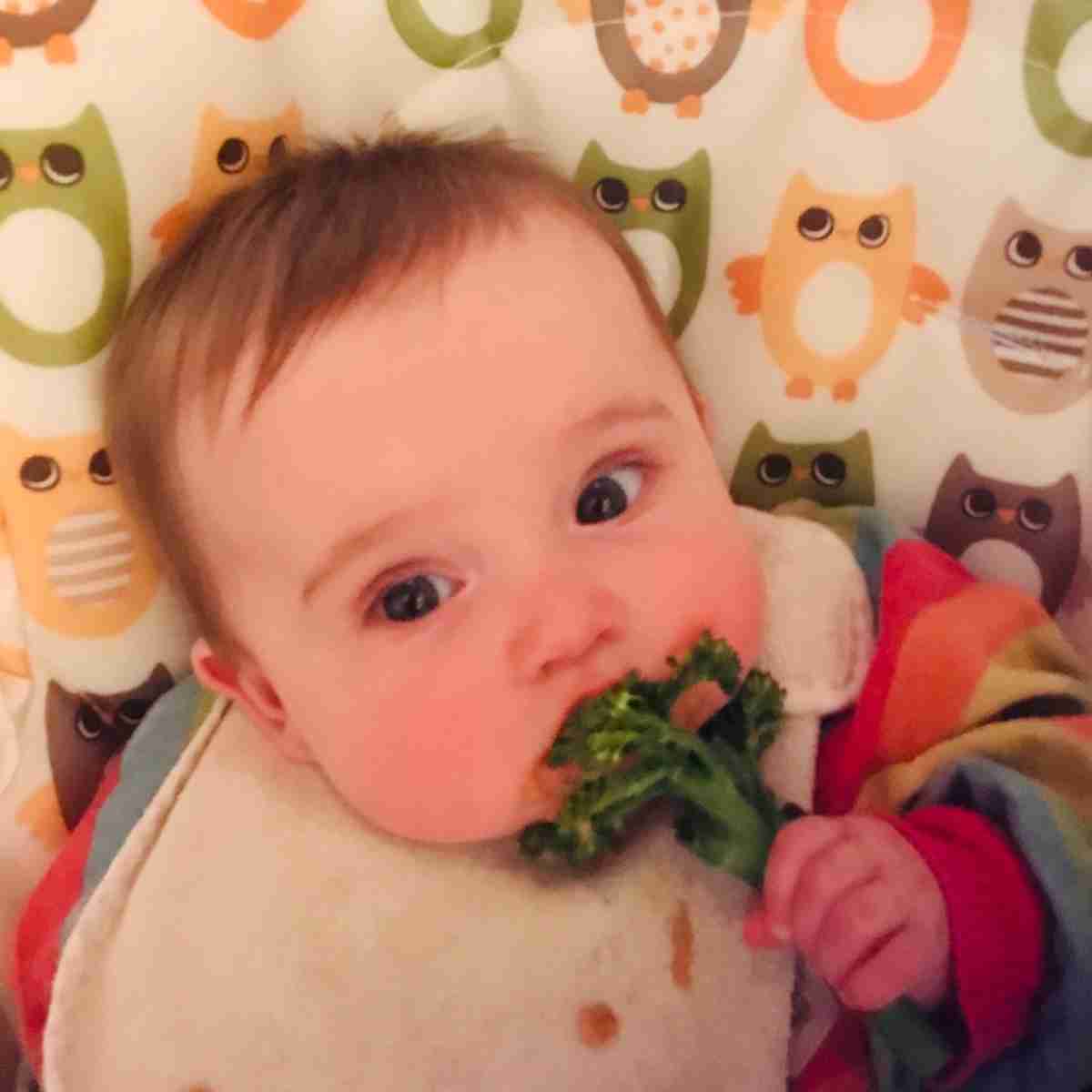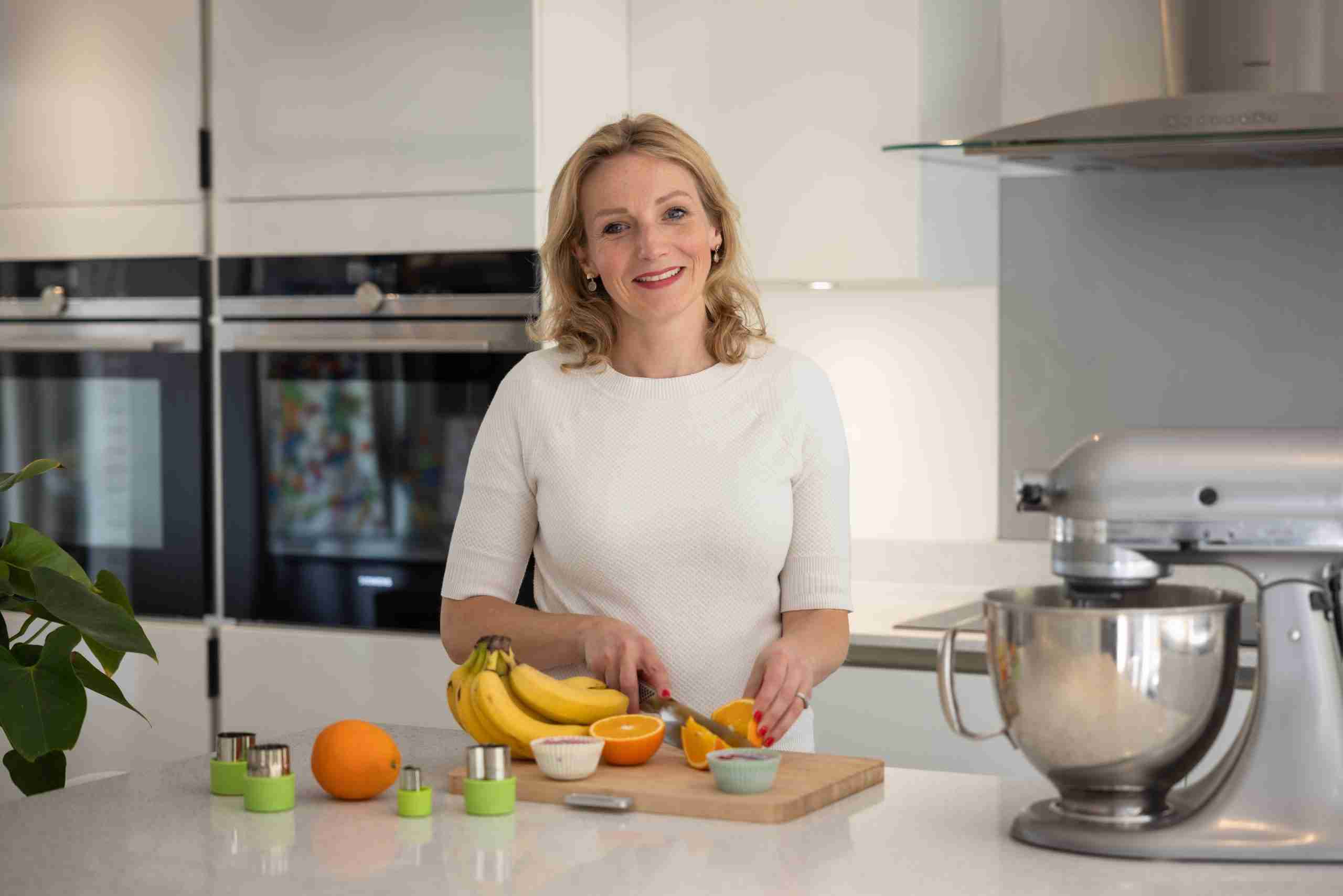Starting solid foods
Baby led weaning first foods – where do you start? If your baby is approaching 6 months old, then it is likely they are ready to be introduced to solid food for the first time! NHS guidance on weaning advises no right or wrong way to wean, whether that be via spoon feeding purees and mashed baby food or baby-led weaning (only serving soft finger foods that they can feed themselves with).
However, it is recommended that your baby is given the opportunity to feed themselves at some point when starting solids, regardless of your chosen method of weaning, as this promotes coordination and independence (1).
The next question you may be asking is, what finger foods can I safely start to give my baby that are nutritious?
Read on for a list of first finger foods for baby-led weaning and some commonly asked questions (to read further information on the benefits of baby-led weaning in a previous blog post). It is worth mentioning that from 6 months, solid food should be offered once a day at any time that works.
What shape and texture are safe?
When baby led weaning, it is important that food is served cut into strips or sticks around the size of your finger so that your baby can easily hold them. Food the same size as their airway (roughly a pound coin) can present a choking hazard so as a rule of thumb, go for larger chunks of foods they can hold.
You can model sticking your tongue out to your baby, so they learn how to spit out food if you are concerned about choking.
Baby led weaning first food (by food group category)
Although breast milk or formula will still give them most of their nutrition, it is important to give a variety of foods from each major food group: fruits and vegetables, starchy carbohydrates, protein and dairy
When baby led weaning the foods below are found in many households so you may find little change to your shopping list. So let’s start with baby led weaning and the first foods.
Fruit
Sweet and refreshing, fruit is a hydrating vehicle for transporting all the essential vitamins, minerals and fiber into your little one to help their growing bodies. As a rule, avoid piths, seeds and tough skin (unless skin is used to grip). Fruit is often one of babies favorite first foods well it definately was for my little girl.
Finger foods options for fruit
• Mango- strips of mango (skin removed)
• Orange- segment with membrane removed
• Blackberry- mashed
• Apricot- ripe half (deseeded and skin removed)
• Banana- whole half of banana (~3 inches long) with skin to grip
• Grapefruit- thinly sliced segments with membrane removed
• Blueberries- squash flat before serving
• Strawberries- large and soft varieties whole or thinly sliced/mashed
• Raspberry- flatten before serving between your fingers or mix mashed into yogurt
• Kiwi- whole or halved (peeled or partially peeled with some skin to grip
• Apple- cooked halves (deseeded and peeled)
• Cherry- finely minced or mashed cherries (pitted and de-stemmed)

Baby led weaning –Vegetables
Right moving on to vegetables in baby led weaning. Another source of nutrients, vegetables come in a variety of textures and colors, great for diversifying your baby’s palate! They make great first weaning foods.
• Carrot, parsnips, roasted sweet potatoes – cooked, cut lengthways into strips
• Spinach- cooked and quartered into big pieces
• Cabbage and kale- cooked, into strips or shredded into food
• Cauliflower, broccoli- cooked and mashed or cut into florets lengthways
• Okra- cooked and deseeded, served whole or cut lengthways
• Bell peppers- cooked and cut in half (skin removed)
• Tomato- large wedges
• Yam- cooked and cut into strips or mashed/ pureed
• Courgette- cooked into spears (can leave skin on for grip)
• Aubergine- cooked and cut into spears (can leave skin on for grip)
• Cucumber- long thin slices (skin removed or leave on for grip)
Baby led weaning – Starchy Carbohydrates
‘Carbs’ can be a great source of fiber and important vitamins and minerals and wholegrain varieties can have even more nutrition to offer for weaning baby.
• Bread- large ends of thick, crusty bread or strips of toast (softer bread can present a choking risk by clumping/sticking in the mouth)
• Tortilla wraps (wholegrain variety for more fibre)- cut into strips.
• Potato or sweet potato- wedge or mashed (skin removed)
• Couscous- can be easier to hold if mixed with yoghurt or mashed fruit to form clumps
• Peas- blended cooked peas to scoop with their hands
• Rice- mash lightly with fork or form a ball
• Oats- prep with water, breast milk/ formula or cow’s and cook until sticky to easily grab
• Pasta and noodles- large flat noodles or whole tube-shaped pasta (penne, rigatoni)

Baby led weaning – Protein
Is needed for growth and muscle development, protein is essential, and these foods are high in iron and zinc, especially important for your baby from 6 months.
• Chicken, pork, turkey, lamb- serve in strips (2cm thick) for your baby to suck on and absorb the nutrients!
• Ground meat- mix ground meat into other foods to easily scoop (mashed potato)
• Fish- deboned and served into strips or flaked and mixed into food
• Eggs- well-cooked omelette strips or mashed hard-boiled egg
• Tofu (plain, silken or firm)- stir into softer scoopable foods or into strips
• Black beans, kidney beans, cannellini – blend cooked into paste to scoop or spread/mix into food
• Chickpeas- mash or squash to scoop with their hands
• Lentils- can serve cooked on top of foods like vegetables or yogurt
Baby led weaning – Dairy
• Yogurt- offer baby full-fat, pasteurized and plain (no added sugar)
• Cheese- pasteurised and low salt cheeses like goats cheese, mascarpone, mozzarella, ricotta, paneer, labneh or swiss and serve slightly harder cheese into strips (not cubed wait for their pincer grasp to develop). In general, look for <100mg salt per serving. Look for lower salt varieties of cream cheese and cottage cheese
• Milk- a small amount of full-fat pasteurised milk mixed into food is fine but should not be introduced as a drink until 12 months (2).
What about feeding baby fats?
Are butter and ghee safe to serve? Yes, they can be served as part of a balanced diet and contain vitamin A for healthy vision and skin and are saturated fats (also in breast milk!). You can add these to many foods you are serving like toast, cooked vegetables or pasta. Try varying this with other oils such as avocado, coconut, olive, peanut and sesame oil- all high in healthy fats (3).
Allergies
The foods listed below can trigger allergies in some children so should always be introduced in small amounts, one at a time, to be able to spot if your child reacts. Visit the NHS website for further allergy advice in babies.
• Cow’s milk (mixed into food)
• Egg (with lion stamp and cooked well-done throughout)
• Gluten-containing foods (see ingredients for wheat, barley and rye)
• Seeds, nuts and peanut (serve crushed, ground or if using nut butter, serve runny by mixing with water)
• Soya (tofu, soy milk mixed into food, and edamame)
• Shellfish (do not serve raw or lightly cooked)- prawns can be a slippery texture and may present a choking hazard so consider waiting till 9-12 months or thinly sliced lengthways or minced (shell and tail removed).
• Fish
How do I know my baby is ready to start weaning?
Your baby is safe to start offering solids (in general) once their developmental milestones have been achieved (4). As always, seek guidance from your baby’s doctor, dietitian or other health professional if in doubt.
• Around 6 months old not before 17 weeks
• Can to sit up-right and hold head up
• Able to reach for objects and bring to their mouth
• Is showing an interest in food by mouthing or reaching for it
Do I still offer breast/ formula milk?
Yes! For the first year, but as their tummy is small, they easily fill up so offer milk after their solid feed (5).
In conclusion, remember there is no right way to wean – it be via spoon feeding purees and mashed foods or baby led weaning. Or a mixture of them both!
If you’d like more like this, you can find more from me by downloading my new e-book or mini milk allergy course or for a one-to-one consultations, visit www.dietitianwithadifference.co.uk or follow me on instragram @dietitian.withadifference

Thank you to Hannah Eiseman Student Dietitian for helping with researching and writing the blog.


